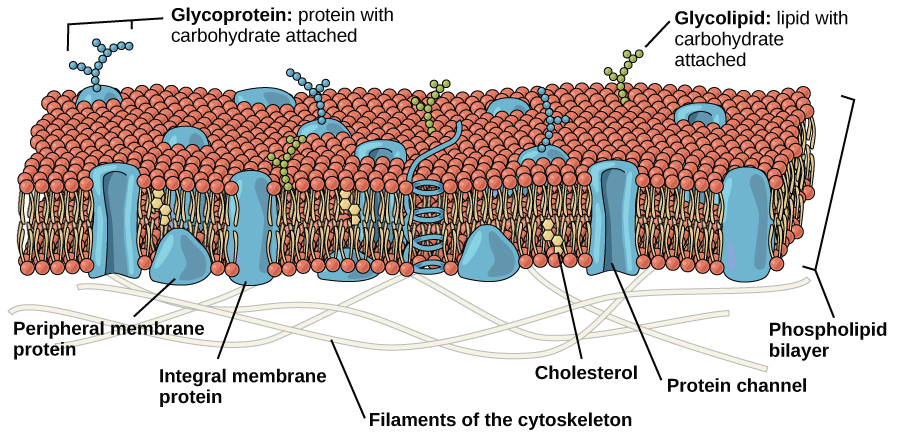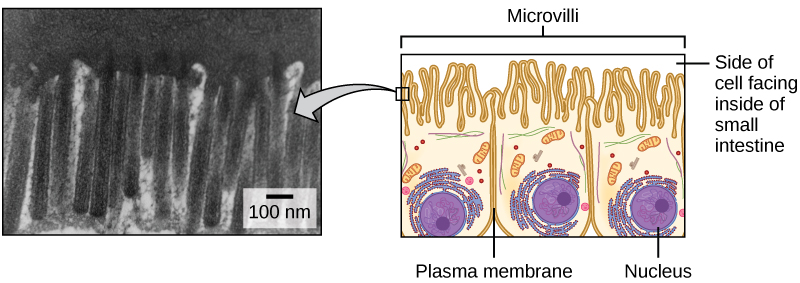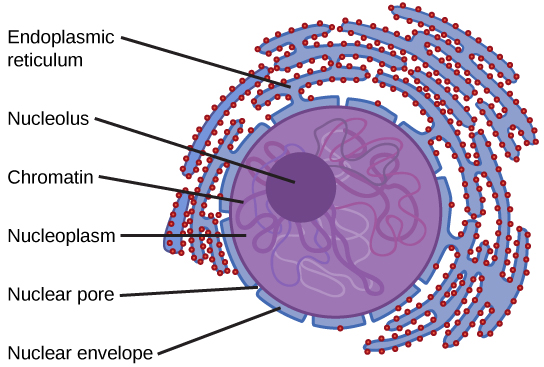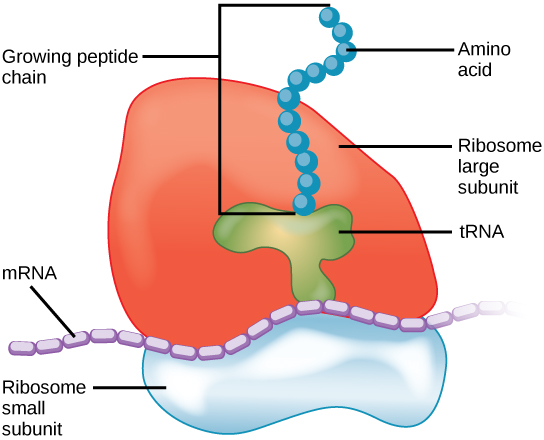
What is the cell?
Cell is the smallest structural and functional unit of an organism, which is typically microscopic and consists of cytoplasm and a nucleus enclosed in a membrane.
Cells are divided into plant cells and animal cells, and there are other divisions, The group of cells that are similar in structure and which together perform a specific function in a multicellular organism is called the tissue.
The cell contains smaller bodies than organelles, such as Golgi, and there is also the nucleus inside which contains the genetic code DNA.
The cell is also surrounded by a membrane called the cell membrane, and the plant cells have a cellulose wall called the cell wall, which is not flexible as the cell membrane.
Each cell organelle has a particular function to perform. Some of the cell organelles are present in both plant cell and the animal cell, while others are unique to just one. Most of the earth’s higher organisms are eukaryotes, including all plant and animals.
Animal cells vs Plant cells
 |
| difference between plant and animal cells |
- similarities between plant and animals
As stated before, plant cells and animal cells share a few common cell organelles as both are eukaryotes. Both plant and animal cells contain membrane-bound organelles like the nucleus, endoplasmic reticulum, mitochondria, Golgi apparatus, peroxisomes, lysosomes. They also have similar membranes such as cytosol, and cytoskeletal elements. The plant cell can also be larger than the animal cell. The normal range of the animal cell varies from about 10 - 30 micrometres and that of plant cell range between 10 - 100 micrometres.
Difference between prokaryotes and eukaryotes
Cells can be divided into two categories called:- Prokaryotic cells.
- Eukaryotic cells.
1/ Prokaryotic cells
Prokaryotes are single-celled organisms that are the earliest and most primitive forms of life on earth. As organized in the Three Domain System, prokaryotes include bacteria and archaeans. Some prokaryotes, such as cyanobacteria, are photosynthetic organisms and are capable of photosynthesis.
A classic example of a prokaryotic cell is Escherichia coli (E. coli).
Prokaryotic cells are not as complex as eukaryotic cells. They have no true nucleus as the DNA is not contained within a membrane or separated from the rest of the cell, but is coiled up in a region of the cytoplasm called the nucleoid.
Prokaryotic organisms have varying cell shapes. The most common bacteria shapes are spherical, rod-shaped, and spiral.
Using bacteria as our sample prokaryote, the following structures and organelles can be found in bacterial cells:
- Capsule: Found in some bacterial cells, this additional outer covering protects the cell when it is engulfed by other organisms, assists in retaining moisture, and helps the cell adhere to surfaces and nutrients.
- Cell Wall: The cell wall is an outer covering that protects the bacterial cell and gives it shape.
- Cytoplasm: Cytoplasm is a gel-like substance composed mainly of water that also contains enzymes, salts, cell components, and various organic molecules.
- Cell Membrane or Plasma Membrane: The cell membrane surrounds the cell's cytoplasm and regulates the flow of substances in and out of the cell.
- Pili (Pilus singular): Hair-like structures on the surface of the cell that attach to other bacterial cells. Shorter pili called fimbriae help bacteria attach to surfaces.
- Flagella: Flagella are long, whip-like protrusions that aid in cellular locomotion.
- Ribosomes: Ribosomes are cell structures responsible for protein production.
- Plasmids: Plasmids are gene-carrying, circular DNA structures that are not involved in reproduction.
- Nucleoid Region: Area of the cytoplasm that contains the single bacterial DNA molecule.
Prokaryotic cells lack organelles found in eukaryoitic cells such as mitochondria, endoplasmic reticuli, and Golgi complexes. According to the Endosymbiotic Theory, eukaryotic organelles are thought to have evolved from prokaryotic cells living in endosymbiotic relationships with one another.
Like plant cells, bacteria have a cell wall. Some bacteria also have a polysaccharide capsule layer surrounding the cell wall. This is the layer where bacteria produce biofilm, a slimy substance that helps bacterial colonies adhere to surfaces and to each other for protection against antibiotics, chemicals, and other hazardous substances.
Similar to plants and algae, some prokaryotes also have photosynthetic pigments. These light-absorbing pigments enable photosynthetic bacteria to obtain nutrition from light.
2/ Eucaryotic cells
Most of the life that is visible to the naked eye is made up of eukaryotic cells. These cells are characterized by a membrane-bound nucleus, and many eukaryotic cells have multiple membrane-bound organelles to carry out specific cell tasks. Eukaryotic cellular life is broken up into four kingdoms: protista, fungi, plants and animals.
- The Plasma Membrane of Eukaryotic Cells

Like prokaryotes, eukaryotic cells have a plasma membrane, a phospholipid bilayer with embedded proteins that separates the internal contents of the cell from its surrounding environment. A phospholipid is a lipid molecule with two fatty acid chains and a phosphate-containing group. The plasma membrane controls the passage of organic molecules, ions, water, and oxygen into and out of the cell. Wastes (such as carbon dioxide and ammonia) also leave the cell by passing through the plasma membrane.
The eukaryotic plasma membrane is a phospholipid bilayer with proteins and cholesterol embedded in it.

- Cytoplasm: Jelly-like Substance Inside the Cell
the cytoplasm is a highly viscous (gel-like) substance enclosed within the cell membrane. It is composed of water (about 85 percent), proteins (10 to 15 percent), lipids (2 to 4 percent), nucleic acids, inorganic salts and polysaccharides in smaller amounts.
Depending on the cell, cytoplasm may also contain occasional granules of inclusions (e.g. stored nutrients and pigments, etc). Apart from the cell membrane, which encloses all cell components, a majority of cell organelles (ribosome, Golgi apparatus, Endoplasmic Reticulum, etc) are located in the cytoplasm. For this reason, most of the metabolic activities occur within the cytoplasm.
- The Cytoskeleton in the Eukaryotic Cell
The cytoskeleton is a network of fibers forming the "infrastructure" of eukaryotic cells, prokaryotic cells, and archaeans. In eukaryotic cells, these fibers consist of a complex mesh of protein filaments and motor proteins that aid in cell movement and stabilize the cell.
The cytoskeleton extends throughout the cell's cytoplasm and directs a number of important functions.
- It helps the cell maintain its shape and gives support to the cell.
- A variety of cellular organelles are held in place by the cytoskeleton.
- It assists in the formation of vacuoles.
- The cytoskeleton is not a static structure but is able to disassemble and reassemble its parts in order to enable internal and overall cell mobility. Types of intracellular movement supported by the cytoskeleton include transportation of vesicles into and out of a cell, chromosome manipulation during mitosis and meiosis, and organelle migration.
- The cytoskeleton makes cell migration possible as cell motility is needed for tissue construction and repair, cytokinesis (the division of the cytoplasm) in the formation of daughter cells, and in immune cell responses to germs.
- The cytoskeleton assists in the transportation of communication signals between cells.
- It forms cellular appendage-like protrusions, such as cilia and flagella, in some cells.
- The Cell's Nucleus
Typically, the nucleus is the most prominent organelle in a cell. The nucleus (plural = nuclei) houses the cell’s DNA and directs the synthesis of ribosomes and proteins. Let’s look at it in more detail.
The nucleus stores chromatin (DNA plus proteins) in a gel-like substance called the nucleoplasm. The nucleolus is a condensed chromatin region where ribosome synthesis occurs. We call the nucleus’ boundary the nuclear envelope. It consists of two phospholipid bilayers: an outer and an inner membrane. The nuclear membrane is continuous with the endoplasmic reticulum. Nuclear pores allow substances to enter and exit the nucleus.

- Chromatin and Chromosomes
The structural entity of chromatin is the nucleosome — a complex of DNA and histones. A chromatin fiber is approximately 10 nm in diameter. Chromatins represent DNA folded on nucleoproteins by a magnitude of 50.
Chromosomes are formed of compacted chromatin where DNA is condensed at least by 10,000 times onto itself.
 |
| The major structures in DNA compaction; DNA, the nucleosome, the 10nm "beads-on-a-string" fibre (chromatin), 30nm fibre (chromatin), and the metaphase chromosomes. Click to enlarge. |
- Ribosomes:
Ribosomes are commonly viewed as organelles, although molecular biology purists sometimes point out that they are found in prokaryotes (most of which are bacteria) as well as eukaryotes and lack a membrane separating them from the cell interior, two traits that could be disqualifying. In any case, both prokaryotic cells and eukaryotic cells possess ribosomes, the structure and function of which are among the more fascinating lessons in biochemistry, owing to how many fundamental concepts the ribosomes' presence and behavior underscore.

References
- https://opentextbc.ca/biology2eopenstax/chapter/eukaryotic-cells/
- https://www.thoughtco.com/cytoskeleton-anatomy-373358
- https://sciencing.com/eukaryotic-cell-characteristics-6376654.html
- http://hyperphysics.phy-astr.gsu.edu/hbase/Biology/cell.html
- https://www.diffen.com/difference/Chromatin_vs_Chromosome
